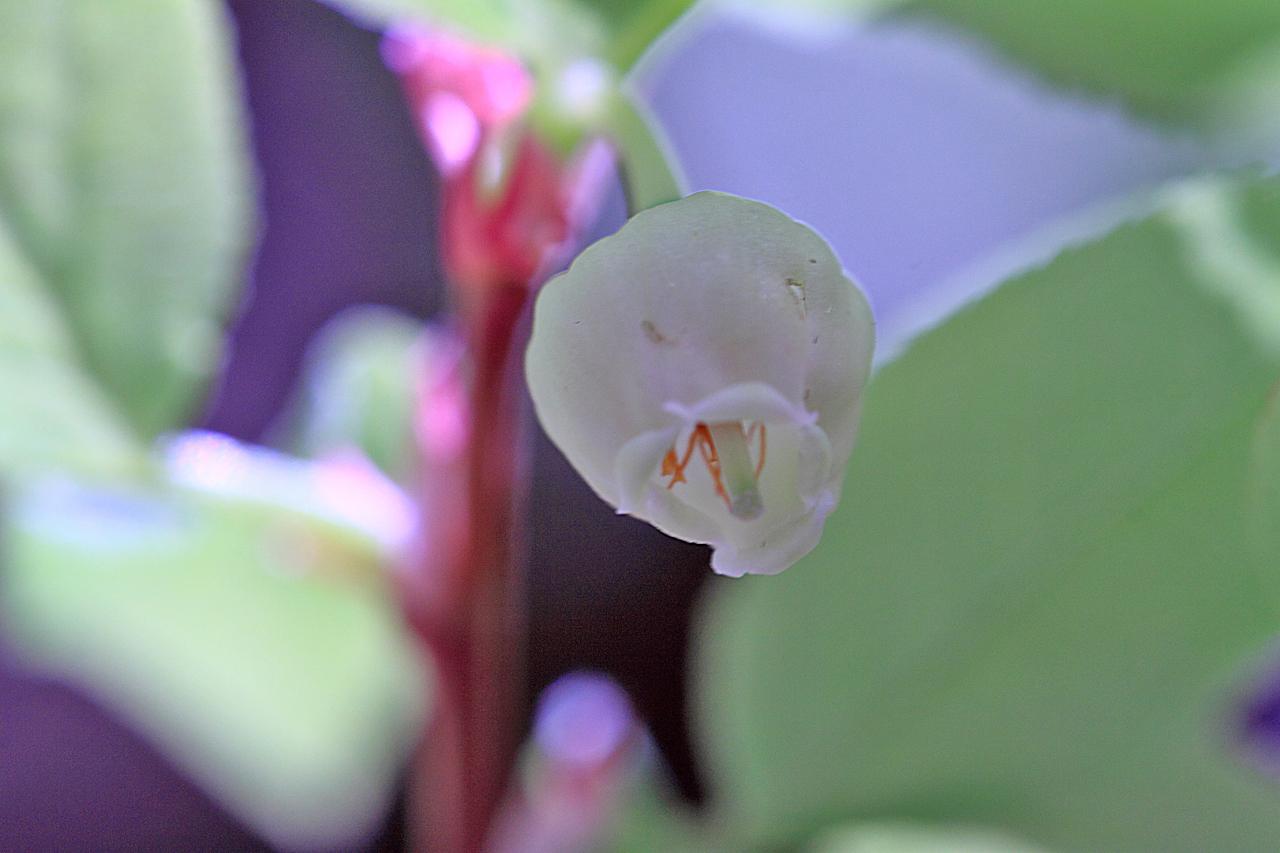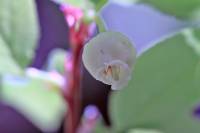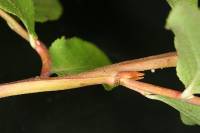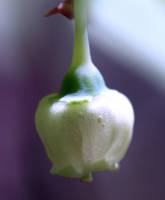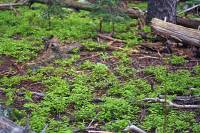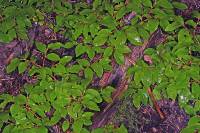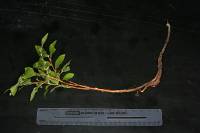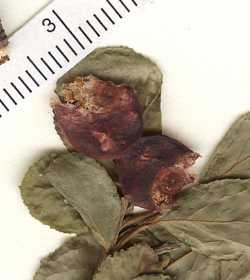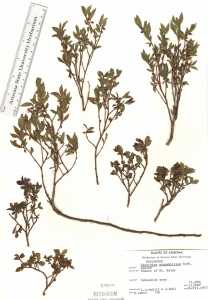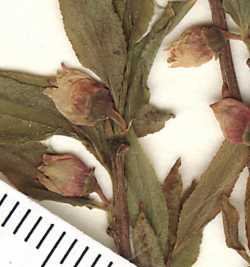PLANT: Shrubs openly branching and forming open colonies from woody rhizomes, 10- 40 cm tall; branches bright green, glabrous, sharply angled, flexuous.
LEAVES: simple, ovate to elliptic, 1-4 cm long, 7-16 mm wide, thin, glabrous or with scattered glandular hairs; tips acute.
INFLORESCENCE: solitary in leaf axils of current year’s growth.
FLOWERS: 2-4 mm long; sepals glabrous, the lobes none to obscure; corollas white or pink; filaments glabrous; anthers awned.
FRUITS: berries, 5-9 mm wide, blue or blue-black. 2n = 24, 48.
NOTES: Mixed coniferous and spruce-fir forest, hillsides, openings: Apache, Cochise, Coconino, Graham cos. (Fig. 1D); 2400-3400 m (7900-11,000 ft); Jun-Jul; se AZ and NM, n to Can., temperate Northern Hemisphere.
REFERENCES: John L. Anderson , 2008, Vascular Plants of Arizona: Ericaceae. CANOTIA 4 (2): 21-30.
Duration: Perennial
Nativity: Native
Lifeform: Subshrub
General: Herbaceous to shrubby perennials, 10-40 cm tall, branches bright green, flexuous, strongly and acutely angled, twigs yellowish or tinged with red, plants forming open colonies from woody rhizomes.
Leaves: Alternate, ovate or oval to elliptic, 10-25 mm long, 7-16 mm wide, margins serrulate, acute to rounded at the apex, blades subsessile, glabrous or with scattered glandular hairs, deciduous.
Flowers: Pink or white, urn shaped, corollas 2-4 mm long, sepals minute, 4-5, persistent, filaments glabrous, anthers included, prolonged upward into tubes and opening by terminal pores, often awned on the back, flowers borne solitary in leaf axils.
Fruits: Berrylike, 5-9 mm in diameter, blue or blue-black, not glaucous, juicy, sweet, edible. Seeds many.
Ecology: Found in open woods, among mixed conifers, spruce-fir forests, and on hillsides, from 8,000-11,000 ft (2438-3353 m); flowering June-July.
Distribution: Widespread from Canada to New Mexico and Arizona.
Notes: The rhizomatous colonies, angled, green twigs and blue berries are the key indicators for this species. Look for this species also under V. oreophilum in older texts.
Ethnobotany: The berries were used as a principal food.
Etymology: Vaccinium is the ancient Latin name of the bilberry, while myrtillus means myrtle like.
Synonyms: Vaccinium myrtillus subsp. oreophilum, Vaccinium myrtillus var. oreophilum, Vaccinium oreophilum
Editor: LCrumbacher 2011
Vaccinium myrtillus var. oreophilum is an herb that forms a rhizomatous groundcover in the upper elevation mixed conifer forest. The secondary branches are angled and the leaves are about 3cm long. The flowers are urn-shaped and white. The berries are dark purple to black.


